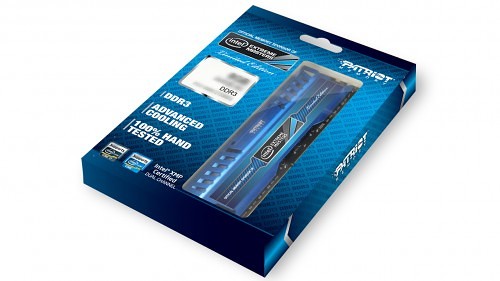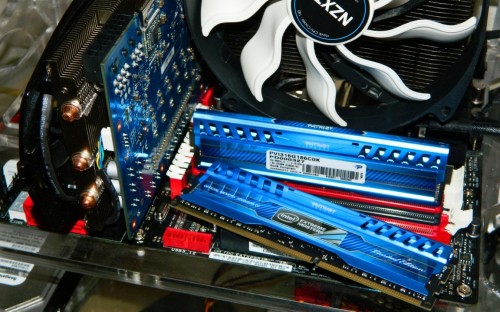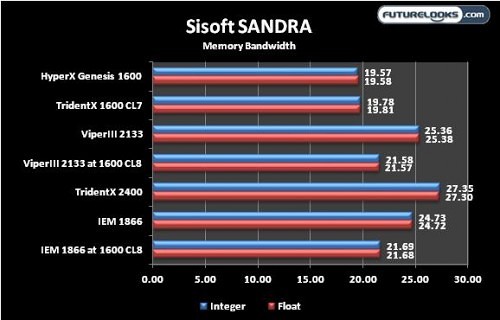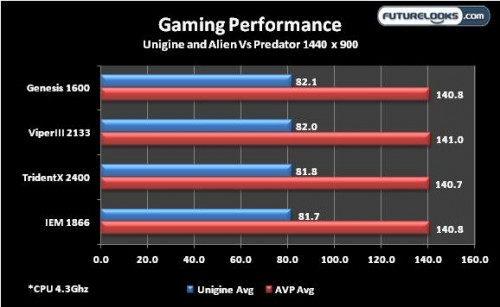A few weeks ago, we got a hands on look at Patriot Memory’s new Viper III DDR3 memory in the 2133 MHz flavor. We discovered that the ICs underneath the light weight, attractive spreaders were Hynix and offer about 2GB/s more memory bandwidth compared to many of the other modules on the market that utilize high quality Micron or Samsung chips. While the Viper III is XMP Ready, the Intel Extreme Masters is XMP Certified. In other words, it’s certified to work on any Intel Z77 chipset confirmed by Intel. Let’s have a look at the IEM memory and see what more it can offer consumers.
Features and Specifications
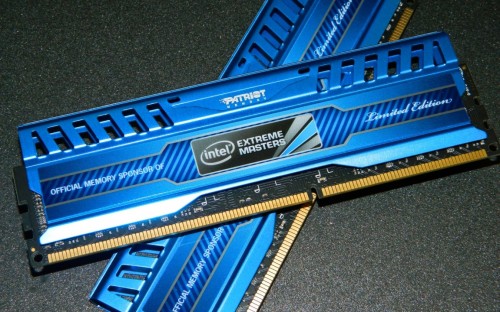
The IEM XMP certified memory comes in flavors up to 2133 MHz in 8, 16, and 32GB kits. Intel XMP ready means it should work after selecting the profile in the BIOS. XMP Certified says it will work on all Z77 platforms using the 10-11-10-30 timings and 1866 frequencies without issue. I’ll be checking that out on the Z77 boards in the lab to confirm when we get to testing shortly.
If you weren’t aware, Intel Extreme Masters is a competition of select pro gamers competing for cash, prizes, and of course virtual glory at games such as League of Legends and Starcraft 2. This is all part of ESL World or eSports Leagues, which come from mainly out of Europe. While that seems to have little to do with us here in the States, the same Intel Extreme Masters DDR3 memory is used in all the elite gaming systems running at the competitions. This means that you can purchase these same exact modules from many a retailer while supplies last.
While not exactly scientific, real world testing did show that the memory was solid in the tournaments and Patriot assured us that their memory would not be the cause of any gaming related failures.
If you want to see the rest of the colorful, deadly Viper III memory kits, head over to our initial review. Keep in mind that if the blue memory kit doesn’t say Intel Extreme Masters on it, then it’s not the IEM Certified kit.
Today we’re testing the 1866MHz kit in a 2x4GB configuration. MSRP is around the $51.99 US price point. Users looking for more memory can pick up the same kit in a 2x8GB configuration as well for only $89.99 US.
Installation and Test Configuration
Patriot claims that these modules are completely INTEL certified for Z77 chipesets. So after a few hours of repetitive installations, we found that the Intel Extreme Masters (IEM) memory worked solidly with various Z77 boards like the ASUS Maximus V pictured above.
Voltage remains a cool 1.5 volts even under full load. All I had to do was find the XMP memory setting, select and apply the profile, then save and restart each system. The frequencies and timings hopped quickly into place on on our ASUS Sabertooth Z77 which is the perfect work horse for such nice memory.
Here’s the test system we used:
- Processor: Intel Core i7-3770K Ivy Bridge
- Motherboard: ASUS Sabertooth Z77
- Memory 1: Patriot Memory Viper III 1866MHz 8GB (as tested)
- Memory 2: Patriot Memory Viper III 2133MHz 8GB
- Memory 3: G.Skill TridentX 2400MHz 8GB
- Memory 4: Kingston HyperX Genesis 1600MHz 8GB
- Storage: Kingston HyperX 128GB SSD
- Graphics: MSI GTX 560 Ti SLI
- OS: Windows 7 Pro 64bit
SISOFT SANDRA memory bandwidth, Unigine and Aliens vs Predator, Graysky 4.0 x264 Benchmark, and PCMark7 Performance Settings round off the testing. We expect flawless performance results from such highly certified memory. We’ll draw our conclusions after the final test. Let’s get to work!
SANDRA Memory Bandwidth
As expected, the IEM 1866 MHz memory offers about 24.7 GB/s memory bandwidth readily useable by the processor. Also, similar to the ViperIII story, the IEM memory does a better job running Intel’s stock 1600 MHz memory frequency at CAS 8 versus the TridentX at CAS7. Patriot’s choice to use Hynix modules underneath pays off in this respect.
Gaming
Gaming gains nothing from high frequency memory alone. The reason we show you this is to help you understand that if you can’t afford the elite overclocking memory, although they always tend to have the best looking spreaders. This means you can always opt for a slower frequency kit to save money when building your system and spend that extra cash saved on a better video card.


